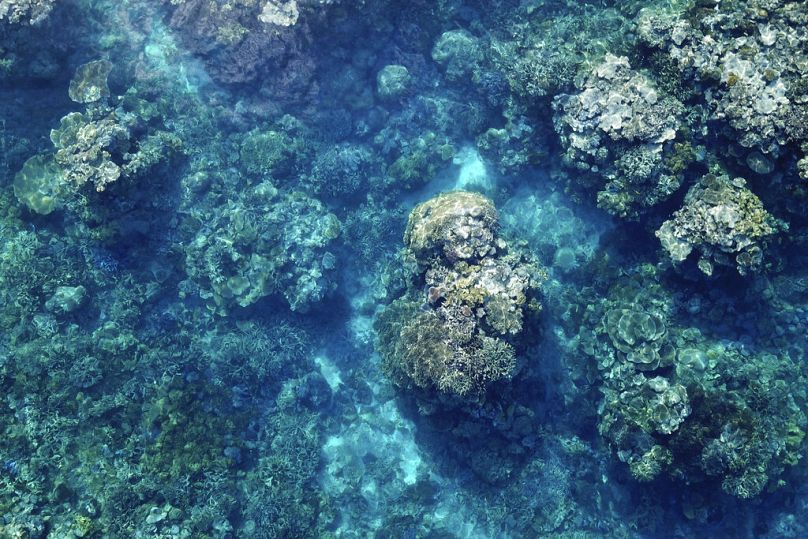Aerial surveys have revealed prevalent shallow-water coral bleaching on most surveyed reefs.
Australia’s Great Barrier Reef is in the grip of a mass bleaching event, officials have confirmed.
The Australian Institute of Marine Science (AIMS) and the Great Barrier Reef Marine Park Authority said on Friday that they have detected widespread damage at the UNESCO World Heritage site.
Aerial surveys conducted by the two authorities across two-thirds of the marine park confirmed that a widespread coral bleaching event is unfolding across the Great Barrier Reef. It is the fifth time in eight years scientists have seen extensive damage on the reef.
“The results are consistent with what we have seen with above average sea surface temperatures across the Marine Park for an extended period of time,” says Reef Authority chief scientist Dr Roger Beeden.
“Aerial surveys of the Reef have revealed prevalent shallow water coral bleaching on most surveyed reefs.”
A global pattern of extreme heat caused by climate change
Mass bleaching events are a modern phenomenon, AIMS says, caused by ocean warming from climate change. Bleaching occurs when stresses like extreme heat cause corals to expel the algae inside of them that sustain them with nutrients and give them their colour.
Previous events occurred in 1998, 2002, 2016, 2017, 2020 and 2022. Before this, there is no evidence of such widespread bleaching in the Great Barrier Reef’s 500-year coral record.
The unfolding mass bleaching event follows similar reports from reefs around the world in the last 12 months. Climate change has amplified the effect of El Niño conditions in the Pacific Ocean, driving record-high sea surface temperatures.
The US government’s Coral Reef Watch programme has warned that the planet is heading towards its fourth global mass bleaching effect where reefs in the Atlantic, Pacific and potentially the Indian Ocean could all bleach.
“In the last northern hemisphere summer there was record-breaking heat stress in the Caribbean and the Eastern Pacific, causing severe and widespread coral bleaching,” says AIMS research programme director Dr David Wachenfeld.
“This mass coral bleaching event on the Great Barrier Reef is part of a global pattern of extreme heat, caused by climate change.”
What does this mass bleaching event mean for the Great Barrier Reef?
The Great Barrier Reef is the world’s biggest coral system stretching more than 2,300km across 320 reefs off Australia’s north-east coast.
“As the Great Barrier Reef ecosystem is so large, the size of Italy, the heat stress across it isn’t uniform,” says Dr Neal Cantin, senior research scientist for AIMS.
“As a result, we are seeing differences between reefs with respect to the number of corals that are completely white.”
Bleaching is a stress response from which the corals can recover - depending on the duration and intensity of the heat stress. But it leaves them more vulnerable to disease and prolonged or intense heat can result in the death of corals.
Dr Cantin says aerial and in-water surveys will continue to document the extent, depth and severity of coral bleaching across the Great Barrier Reef.
“Until both the aerial and in-water surveys have been completed and the data analysed, we cannot predict the potential impacts that will follow this year’s mass bleaching event.”












